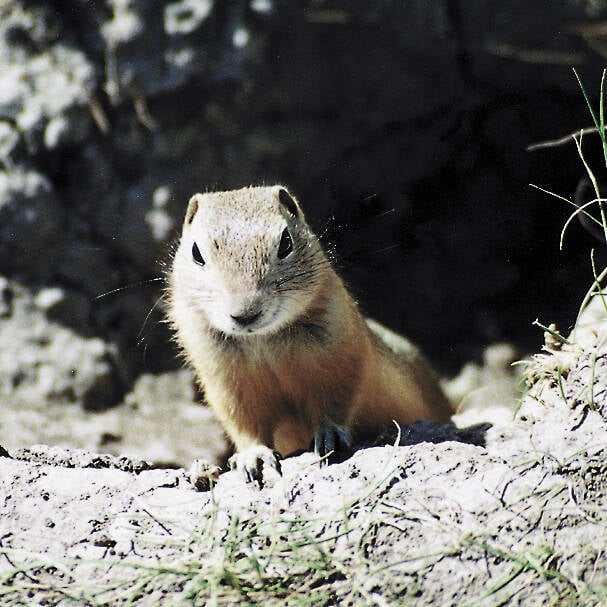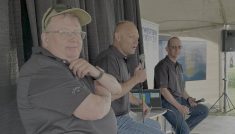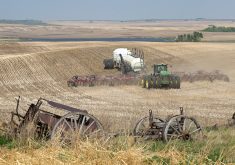REGINA – As Canadian Speckle Park breeders move toward achieving full breed status, one seasoned cattle producer offers some advice.
“Don’t make all the cattle in your breed the same; we need cattle of all dimensions to make it work,” show judge and long-time Angus breeder Dennis Erickson of Wetaskiwin, Alta., said Nov. 23 during the first Speckle Park show at the Canadian Western Agribition.
“It doesn’t matter what kind of cattle you have as long as they are good ones and they are functional.”
The breed has been building since the early 1950s when Shorthorn, English White Park and Angus were combined to produce a distinctive black and white beef animal. The practice was to breed the crossbred cows back to Angus to achieve a distinctive colour pattern and moderately framed animal.
Read Also

Sask. ag group wants strychnine back
The Agricultural Producers Association of Saskatchewan has written to the federal government asking for emergency use of strychnine to control gophers
By the end of this year, supporters hope to achieve distinctive breed status, making Speckle Park the second made-in-Canada breed. Hays Converters from Alberta was the first.
What this breed wants is staying power.
Dale and Lynda Chibri of Neilburg, Sask., have been Speckle Park enthusiasts since 1988.
“We bought two cows in 1988 and we were very intrigued,” Dale said.
“We used to get a lot of ribbing. They had various names for them.”
He accepted the comments with good humour and now watches as the breed gains notice across Canada. The cattle are winning their share of carcass competitions with a high percentage of AAA marbling scores.
Chibri’s cattle also received plenty of notice at Agribition, where he won grand champion bull, numerous
classes, get of sire, breeders’ herd banner and premier breeder award.
His ambition is to keep the breed going.
“I might retire, but the breed will continue,” he said.
Chibri’s son Chip has his own Speckle Park herd and went shoulder to shoulder against his father in the show classes. Chip and his wife Wanda won the grand champion female.
Another enthusiast is Rod Remin of Crossfield, Alta.
“You’re looking at a breed that’s been around since 1950,” Remin said.
“We think these will stick around.”
As part of the distinctive breed committee, he travels the country inspecting cattle for possible inclusion for foundation stock status. Once an adequate number is achieved, the herd book will close.
Remin’s team is looking at each herd’s private breeding records. The selections must meet the criteria set out for the breed for colour and beef conformation characteristics.
The colour pattern of this polled breed is distinctive with black or spotted sides with a white top line, spotted rear quarters and a black roan head with black ears, feet and nose. Or, they may be white with black ears, nose and skin around the eyes and feet.
So far, 330 head have been qualified and registered as foundation stock.
“We’re at the point where we have all the rules of eligibility,” he said.
In 1983 nine herds formed a breeders’ association and in 1993 Agriculture Canada incorporated the Canadian Speckle Park Association as an evolving breed.

















